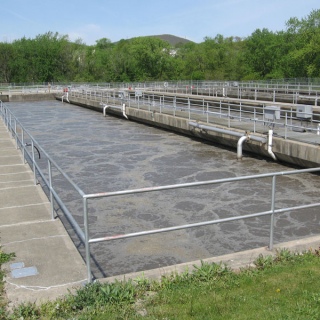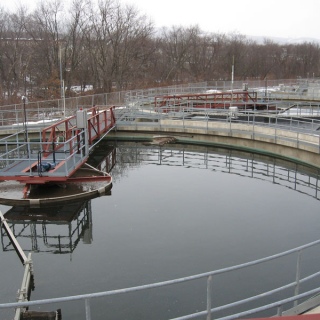Secondary Treatment
The LRBSA treatment plants use the activated sludge process to provide secondary treatment. Wastewater entering the aeration tank is combined with activated sludge, a mixture of organic material and microorganisms. Air is bubbled through the wastewater in the aeration tank to supply oxygen to bacteria and other microorganisms that feed on the organic material in the wastewater and clean the wastewater.
Treatment standards established by Pennsylvania’s program to improve water quality in the Chesapeake Bay also require the removal of nitrogen and phosphorous from the treated water. These elements serve as nutrients that can stimulate excess vegetative growth that can have an adverse effect on aquatic habitat and water quality.
Nitrogen removal can be achieved in the secondary treatment process by alternating the oxygen-rich aerated zones with unaerated zones where free oxygen is not present in the water. This sequence encourages activity by specialized bacteria that remove nitrogen from the water in the absence of oxygen.
The LRBSA removes phosphorous from the wastewater by the addition of a chemical at a point in the process immediately after the aeration tanks. This chemical selectively bonds with the phosphorous and combines with the activated sludge.
Secondary treatment continues in settling tanks, or secondary clarifiers, where the activated sludge settles to the bottom. A portion of this activated sludge is wasted to the sludge treatment process. The remainder is pumped back to the head of the aeration tank. The clear, treated water overflows the surface of the clarifiers and continues to the next stage of the treatment process.




